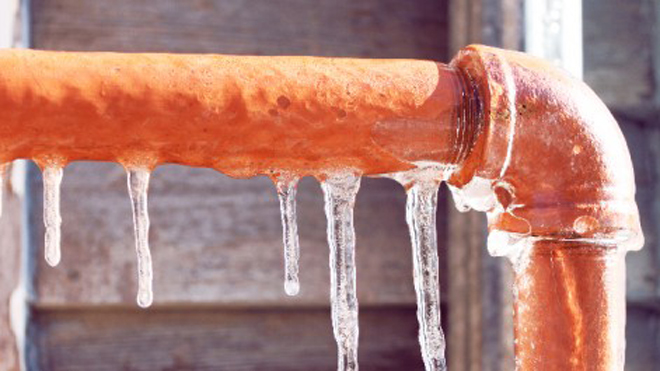We've uncovered the article on Preventing and dealing with frozen pipes below on the internet and reckoned it made perfect sense to write about it with you here.

Winter can damage your plumbing, particularly by freezing pipelines. Below's exactly how to avoid it from happening and what to do if it does.
Intro
As temperature levels drop, the risk of icy pipes increases, possibly resulting in costly repair services and water damages. Understanding exactly how to stop icy pipes is important for home owners in cool climates.
Prevention Tips
Protecting prone pipelines
Cover pipelines in insulation sleeves or make use of warmth tape to protect them from freezing temperatures. Focus on pipelines in unheated or external areas of the home.
Heating techniques
Maintain indoor rooms properly heated up, specifically areas with plumbing. Open cupboard doors to enable cozy air to distribute around pipelines under sinks.
Exactly how to recognize frozen pipes
Seek decreased water flow from taps, uncommon odors or noises from pipes, and noticeable frost on revealed pipes.
Long-Term Solutions
Structural changes
Take into consideration rerouting pipelines far from exterior walls or unheated locations. Add extra insulation to attic rooms, cellars, and crawl spaces.
Upgrading insulation
Invest in high-quality insulation for pipelines, attics, and wall surfaces. Appropriate insulation helps preserve consistent temperature levels and minimizes the risk of icy pipes.
Securing Outdoor Pipes
Garden tubes and outdoor taps
Disconnect and drain pipes yard hose pipes prior to winter. Set up frost-proof faucets or cover outdoor taps with shielded caps.
Understanding Frozen Pipes
What triggers pipelines to ice up?
Pipelines ice up when revealed to temperature levels listed below 32 ° F (0 ° C) for expanded durations. As water inside the pipelines ices up, it increases, taxing the pipeline walls and potentially creating them to rupture.
Risks and problems
Frozen pipes can lead to water system disturbances, property damages, and pricey repair services. Ruptured pipelines can flood homes and create comprehensive architectural damage.
Signs of Frozen Pipeline
Recognizing icy pipes early can prevent them from bursting.
What to Do If Your Pipes Freeze
Immediate activities to take
If you think frozen pipelines, keep taps available to ease pressure as the ice thaws. Use a hairdryer or towels taken in hot water to thaw pipelines slowly.
Verdict
Avoiding icy pipes calls for proactive procedures and fast actions. By recognizing the causes, indicators, and preventive measures, house owners can protect their plumbing throughout cold weather.
5 Ways to Prevent Frozen Pipes
Drain Outdoor Faucets and Disconnect Hoses
First, close the shut-off valve that controls the flow of water in the pipe to your outdoor faucet. Then, head outside to disconnect and drain your hose and open the outdoor faucet to allow the water to completely drain out of the line. Turn off the faucet when done. Finally, head back to the shut-off valve and drain the remaining water inside the pipe into a bucket or container. Additionally, if you have a home irrigation system, you should consider hiring an expert to clear the system of water each year.
Insulate Pipes
One of the best and most cost-effective methods for preventing frozen water pipes is to wrap your pipes with insulation. This is especially important for areas in your home that aren’t exposed to heat, such as an attic. We suggest using foam sleeves, which can typically be found at your local hardware store.
Keep Heat Running at 65
Your pipes are located inside your walls, and the temperature there is much colder than the rest of the house. To prevent your pipes from freezing, The Insurance Information Institute suggests that you keep your home heated to at least 65 degrees, even when traveling. You may want to invest in smart devices that can keep an eye on the temperature in your home while you’re away.
Leave Water Dripping
Moving water — even a small trickle — can prevent ice from forming inside your pipes. When freezing temps are imminent, start a drip of water from all faucets that serve exposed pipes. Leaving a few faucets running will also help relieve pressure inside the pipes and help prevent a rupture if the water inside freezes.
Open Cupboard Doors
Warm your kitchen and bathroom pipes by opening cupboards and vanities. You should also leave your interior doors ajar to help warm air circulate evenly throughout your home.

Do you like reading up on Prevent Frozen Pipes ? Try to leave a review directly below. We will be happy to listen to your thoughts about this piece. We are looking forward that you come back again later on. Be sure to set aside a second to distribute this blog entry if you liked it. Many thanks for your time. Revisit us soon.
Course Detail